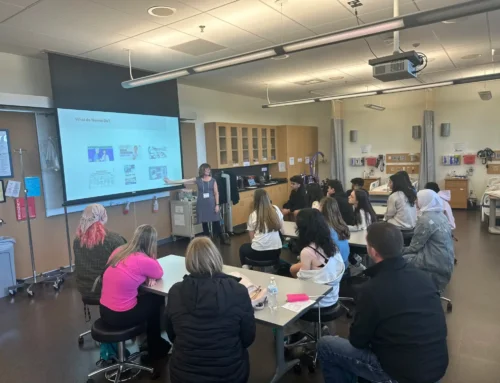At a recent ELA Fellows’ teacher leader workshop, I observed educators perusing a variety of resources related to the history of Native American boarding schools in the United States. They observed primary source photographs and newspaper articles, read informational texts and picture books that presented facts from multiple points of view, and watched videos that explored this topic from the perspective of Native American children who were removed from their families and forced to attend these schools. The mood in the room was engaged yet somber as participants gained a deeper understanding of this time in our nation’s history and its devastating effects on Native American families and culture.
Using linked text sets like the one described above is a powerful instructional strategy to implement in any classroom. A linked text set is defined as: a group of resources organized by a topic, theme, or essential question. These resources are multimodal, and can include videos, informational or literary texts, visual art, primary source documents, audio recordings, picture books, and more. Evaluating and synthesizing multiple texts in order to engage in higher-level reading, writing, and speaking skills to deepen content knowledge is a key component of our Washington State English Language Arts Standards.
A major goal of linked text sets is to provide students with a wider range of materials and perspectives than is often provided by a single textbook or novel. Including both print and non-print resources promotes learning for ALL learners and supports students in developing a more complete understanding of the content. When teachers create a linked text set, they can use their “equity lens” and ask themselves: “Whose story is being told? Whose story is NOT being told? Whose perspective is shown? Whose perspective is invisible?” By thoughtfully curating linked text sets that better represent a wide range of diverse viewpoints, cultures, and interpretations, teachers can better prepare their students to engage in the critical thinking necessary to be thoughtful consumers of information in today’s world.
A second grade teacher recently shared a linked text set she created on ocean pollution that included informational articles from ReadWorks and Epic! Reading, Google images of garbage along a seashore and a seal tangled in ocean trash, a video of a dog cleaning up ocean garbage, and the picture book, Just a Dream, by Chris Van Allsburg. She shared that her students’ level of engagement and excitement was much higher than usual, and they used evidence from multiple texts to give speeches and create posters to encourage students in their school not to litter on the playground. Clearly, linked text sets and the higher-level thinking skills they promote are not just for older students!
So how does a teacher find the time to create linked text sets? Thankfully, there are many free online resources available that simplify the process. These include CommonLit, Teaching Tolerance, ReadWorks, Newsela, The Library of Congress, Epic! Reading, Smithsonian Tween Tribune, and many more. Additionally, while linked text sets are a powerful tool, they are more manageable when teachers create them to augment content or a novel that is worthy of the additional time spent on deepening student understanding.
If you are interested in learning more about Linked Text Sets, check out the following resource:
- “The Case for Multiple Texts” (Educational Leadership article)
Here are several resources to increase your knowledge around Native American boarding schools and a link to the OSPI Office of Native Education, which includes the curriculum Since Time Immemorial: Tribal Sovereignty in Washington State.
- Unspoken: America’s Native American Boarding Schools (PBS video)
- Film Tells Life of Tulalip Treasure, Harriette Shelton Dover
- OSPI Office of Native Education
If you’re interested in learning more about linked text sets, please contact Kim Kellogg, Regional Literacy Coordinator.




